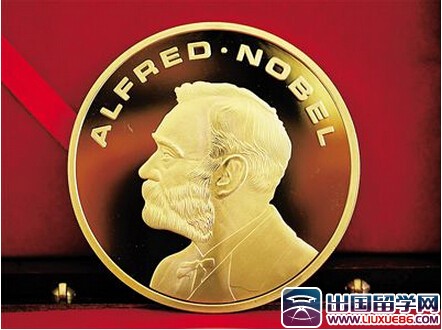出国网考研英语频道为大家提供2015考研英语题源阅读:The 2014 Nobel science prizes,大家可以练习一下!

2015考研英语题源阅读:The 2014 Nobel science prizes
Prizes for work on light-emitting diodes, animal navigation and microscopy
THE Nobel prizes were originally intended to reward people or organisations who, as the founder’s will put it, “have conferred the greatest benefit on mankind”. Often, in the field of physics, that benefit is a measure of understanding of the very small or the very distant: a light shone into the vast darkness of ignorance about how the universe works. This year, by contrast, the physics prize has been awarded for an actual light that has already conferred great benefit on mankind, and promises yet more. Isamu Akasaki of Meijo University, Hiroshi Amano of Nagoya University and Shuji Nakamura of the University of California, Santa Barbara, shared in cracking the problem of making diodes that give off blue light.
The light of candles and lamps gave way to the incandescent bulb in the 19th century, but such bulbs still squander a great deal of electrical energy as heat. A light-emitting diode (LED) uses semiconductors to convert electricity into light with almost perfect efficiency.
LEDs, though, make light in narrow bands of colour dictated by the properties of the semiconductor. Red LEDs came first, in the early 1960s. Green ones took until the end of that decade. But blue, the third primary colour needed to be able to generate white light, was elusive. That took until the early 1990s, when Drs Akasaki, Amano and Nakamura worked out how to do it, using a substance called gallium nitride.
LED-based lighting, armed with all three primaries, is now displacing not only incandescent bulbs, but also fluorescent ones. But blue light has made its own way as well. Blue diodes lie at the heart of DVD players and their aptly named Blu-ray successors. Communications and computing are heading towards a future that makes more use of light’s properties, and blue’s short wavelength is best for ever-smaller technologies. As the members of Sweden’s Royal Academy of Science, who award the physics prize, put it during their press conference, this year’s winner is more an “invention” prize than a “discovery” prize. But it is an invention, they said, that would have made Alfred Nobel happy.
On the grid
The prize for physiology or medicine was, by contrast, most definitely a discovery prize. It went to three scientists who have helped work out how mammals navigate. Between them John O’Keefe of University College, London, and May-Britt Moser and Edvard Moser of the Norwegian University of Science and Technology, in Trondheim, identified two sets of cells, in two neighbouring parts of the brain, which tell that brain where it is.
Dr O’Keefe published his prize-winning work in 1971. He had been studying rats’ brains by recording the electrical activity of individual nerve cells in an area called the hippocampus. He found that some cells, now known as place cells, were quiet most of the time, but burst into life whenever the rat in question was in a particular part of its range—different cells being active in different places. This was the first indication that there is a specific relationship between the geography of the outside world and the geography of an animal’s brain.
In 2005 the Drs Moser, working on a brain region connected to the hippocampus, the entorhinal cortex, found a more complex system of location cells, now known as grid cells. These, as their name indicates, are arranged in a hexagonal grid (place cells seem distributed haphazardly). Unfortunately for neurologists, these grids do not seem to be physical maps of the outside world. The brain is not so simple. Work on disentangling exactly how they represent geography continues.
Flashes of inspiration
The chemistry prize went to Eric Betzig, Stefan Hell and William Moerner, for inventing ways to make microscopes better, by circumventing what is known as Abbe’s resolution limit. This is the fact, noted in 1873 by Ernst Abbe, that a microscope cannot properly see any object smaller than half the wavelength of the light it uses.
Dr Hell, of the Max Planck Institute for Biophysical Chemistry, in Germany, relied on lasers to circumvent the resolution limit. By delivering precisely calibrated pulses, a laser can be used to make certain molecules fluoresce. His system employs two beams, one to induce fluorescence and another to suppress it in all but a tiny area of the sample being studied. By sweeping the combined beam across a sample, and measuring the light emitted by the glowing molecules, features much smaller than the Abbe limit can be resolved.
Dr Betzig, of the Howard Hughes Medical Institute, and Dr Moerner, of Stanford University, also rely on fluorescence. In their technique, a biological sample is tagged with a special protein that glows when exposed to light. Weak light of the appropriate wavelength is shone on the sample, which persuades a small fraction of the special protein molecules to light up. An image is taken, the light is switched off, and the procedure is repeated. Provided the glowing molecules are farther apart than the Abbe limit, their relative positions can be discerned. Repeat the procedure and a different set of molecules will glow. Repeat it often enough, and combining the images it generates allows a detailed picture that includes features smaller than the Abbe limit to be built up.
The advantage of both techniques is that they can be used to study cellular processes as they happen. Electron microscopy is able to resolve much smaller details than optical microscopy can manage, but because it must take place in a vacuum it cannot be used to study living samples. The techniques pioneered by Drs Hell, Betzig and Moerner allow researchers to see proteins being shuttled around a cell, or observe individual neurons creating and pruning connections to other neurons—in other words, to watch life as it unfolds.
词汇:
light-emitting diodes:发光二极管
microscopy:显微镜
lasers :激光器
elusive:难以捉摸的
hippocampus:海马
温馨提示:如果你遇到生词和不懂的地方,可以点击翻译工具箱进行翻译!
推荐阅读:
| 考研英语大纲 | 考研英语词汇 | 英语作文万能句子 | 考研英语真题 | 考研英语作文 | 考研复试英语 |